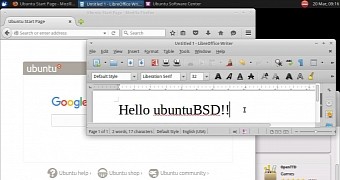If you're planning on installing the ubuntuBSD operating system alongside another OS, such as the popular Microsoft Windows, we're informing you today that there are some easy instructions out there.
As we reported last week, the ubuntuBSD maintainers have announced the general availability of the official ubuntuBSD forums, where users can get together and share their knowledge on various topics related to the upcoming computer operating system that tries to mix the familiarity of Ubuntu/Debian with a FreeBSD kernel.
And it looks like users are already populating the ubuntuBSD forums asking various questions or posting guides on how to achieve different tasks. One that caught our attention instructs users on how to configure the GRUB2 bootloader to dual boot ubuntuBSD with the Microsoft Windows operating system or any other OS for that matter.
"As you may know already, os-prober with grub2 currently not working, as result we have no auto detection in dual booting various operating systems with ubuntuBSD's GRUB2 implementation. So we had to manually specify the grub2 configuration to boot for example.: Windows," said the user on the respective forum topic.
How to dual boot ubuntuBSD with Windows
The steps are pretty basic. All you have to do is to open the /etc/grub.d/40_custom file as root or with sudo in a terminal window with the nano text editor (e.g. sudo nano /etc/grub.d/40_custom) and add the following lines to it. Please remember to tune the "hd(0,1)" variable to suite your needs, with the location of the other pre-installed OS.
set root=(hd0,1)
chainloader +1
}
#GRUB_HIDDEN_TIMEOUT=0
GRUB_HIDDEN_TIMEOUT_QUIET=false
GRUB_TIMEOUT=10
grub-mkconfig -o /boot/grub/grub.cfg
How to setup #GRUB to dual boot #ubuntuBSD with #Windows https://t.co/LbRqdQA4E8 — ubuntuBSD (@ubuntuBSD) May 2, 2016

 14 DAY TRIAL //
14 DAY TRIAL //